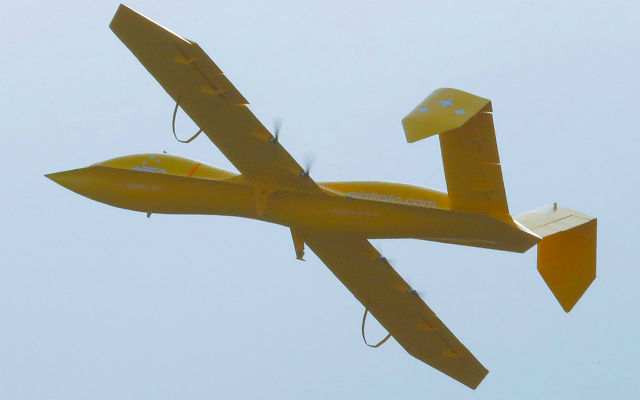A new stratospheric unmanned air vehicle with the same high-tech capabilities found in US military-operated unmanned systems – but with the price tag of a car – is being pitched to the civil UAV market.
Manufacturer Arca Space says the electric-powered AirStrato UAV has the flight ceiling of the Northrop Grumman RQ-4 Global Hawk, the endurance and size of General Atomics Aeronautical Systems MQ-1 Predator and MQ-9 Reaper, and the payload capability of the AAI RQ-7 Shadow. All of this, it says, is “at the cost of an expensive car”.
“Few businesses [or] military and research institutions can afford to purchase a high-performance UAV such as the Predator, for example,” Arca says. “Even fewer can get access to a stratospheric flying Global Hawk. The rest have to contend with low-performance unmanned aircraft.
“We merged the performance of the former with the affordability of the latter.”
The AirStrato flew for the first time in February this year, and two types are now available to preorder for between $80,000 and $140,000. Production for the Pioneer variant is due to begin in March 2015 and for the Explorer variant in August.
The Explorer model is the true stratospheric variant, with a ceiling of 60,000ft, a 20h endurance, 16m (52.5ft) wingspan, beyond-line-of-sight satellite control and flight speeds of some 90 knots (170km/h).
A 230kg take-off weight with a 45kg payload capacity provides a capability that is “far beyond [what] any other civilian unmanned air vehicle can provide for this price range”, the company says.
“This will allow small businesses, research institutions and even individuals to benefit from an affordable, high performance aerial robot,” Arca adds.
The Pioneer model, meanwhile, is designed to fly at lower altitudes of around 26,000ft, has a 12m wingspan, is satellite-controlled and has a 12h endurance. It has a take-off weight of 220kg, a maximum speed of 120km/h and again can carry a 45kg payload.

Arca Space
Both aircraft are built from composites with the electrical power coming from batteries and solar cells. They are launched via the Accelerator pneumatically driven catapult and recovered with parachutes.
AirStratos UAVs have integrated inertial flight stabilisation systems and a programmable autopilot, while the onboard ADS-B system means it is already capable of operating with the US Next Generation Air Transportation System, Arca says.
This is not the first space-borne project for the company, as it was previously contracted to build a large solar air balloon to carry the crew capsule of the suborbital vehicle Stabilo into the stratosphere.
It is also involved in the manufacture of rockets, and in 2010 the Helen rocket was launched at 120,000ft – the first powered flight in the Google Lunar X Prize competition. The rocket was transported into the stratosphere with the help of an Arca-built helium balloon.
Haas 2B, meanwhile, is a single-stage suborbital manned rocket. It has the capacity to transport a crew of five into suborbital flight inside a manned capsule, and is designed to compete in the suborbital space tourism market.
The orbital rocket Haas 2C is able to launch 400kg of payload to low earth orbit and has two stages, which are both fuelled with liquid oxygen and kerosene.
Source: FlightGlobal.com


























